Regional Jewelry of Balochistan
Regional Jewelry of Balochistan - Introduction
Regional jewelry of Balochistan is known for its traditional intricate designs, heavy use of metal, and incorporation of vibrant colors. It reflects the rich cultural heritage of the Baloch people. The names of the jewelry that are distinct to the region include, Mourth, Dholan, Tasin or Tasni, Har, Cholumb, Banor, Baron, Durr, Dhang and many other.
Baloch jewelry, as typically understood, features gold and silver-based jewelry with large, bold, and tribal designs, including earrings, necklaces, anklets, and bracelets, but may go by different names or be categorized by their materials and patterns.
Here are some key articles of traditional Balochi jewelry:
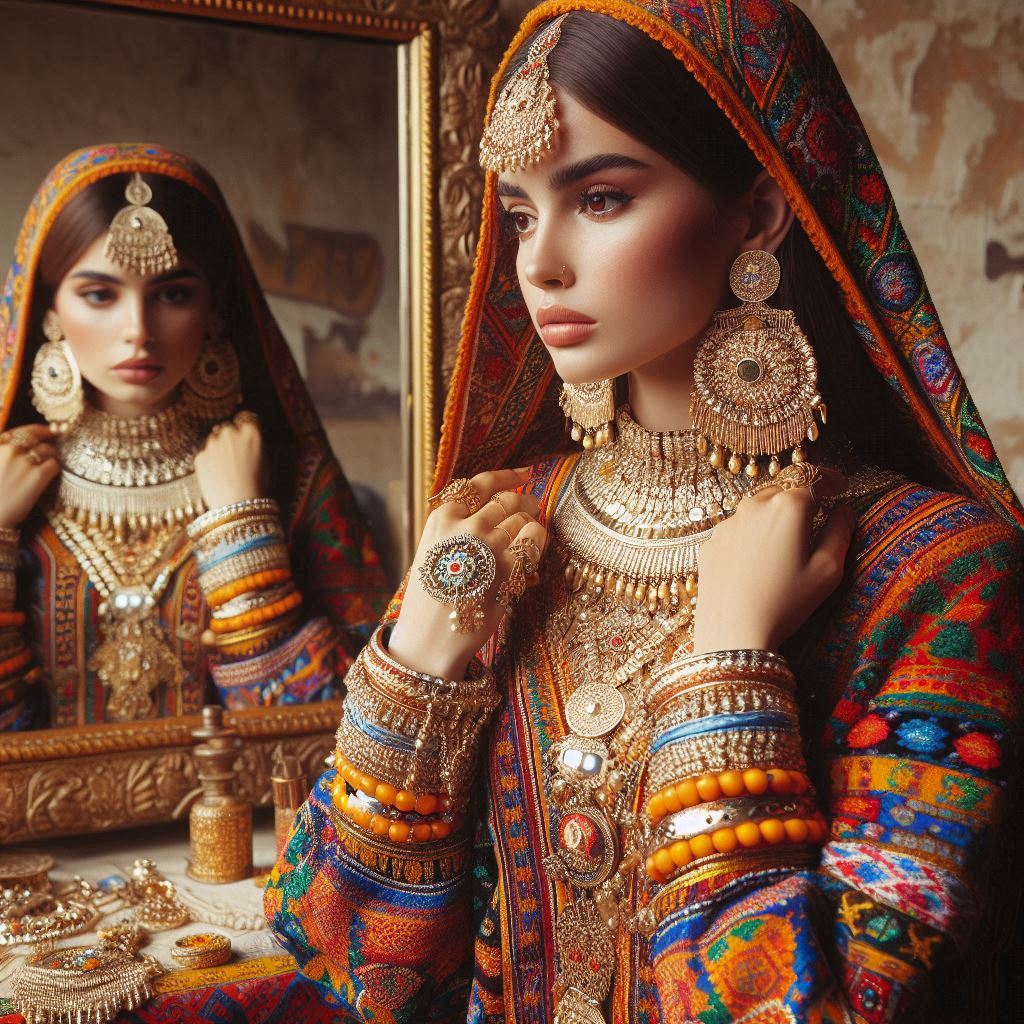
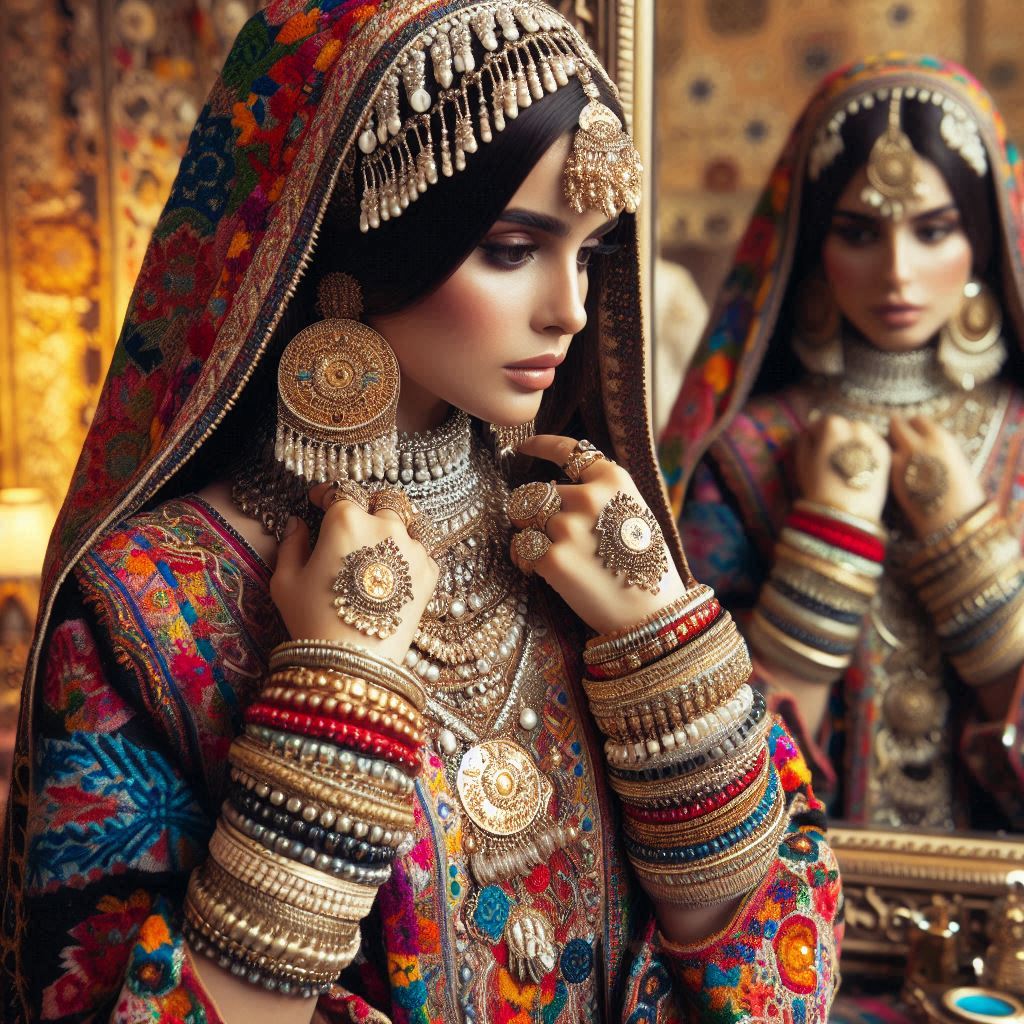
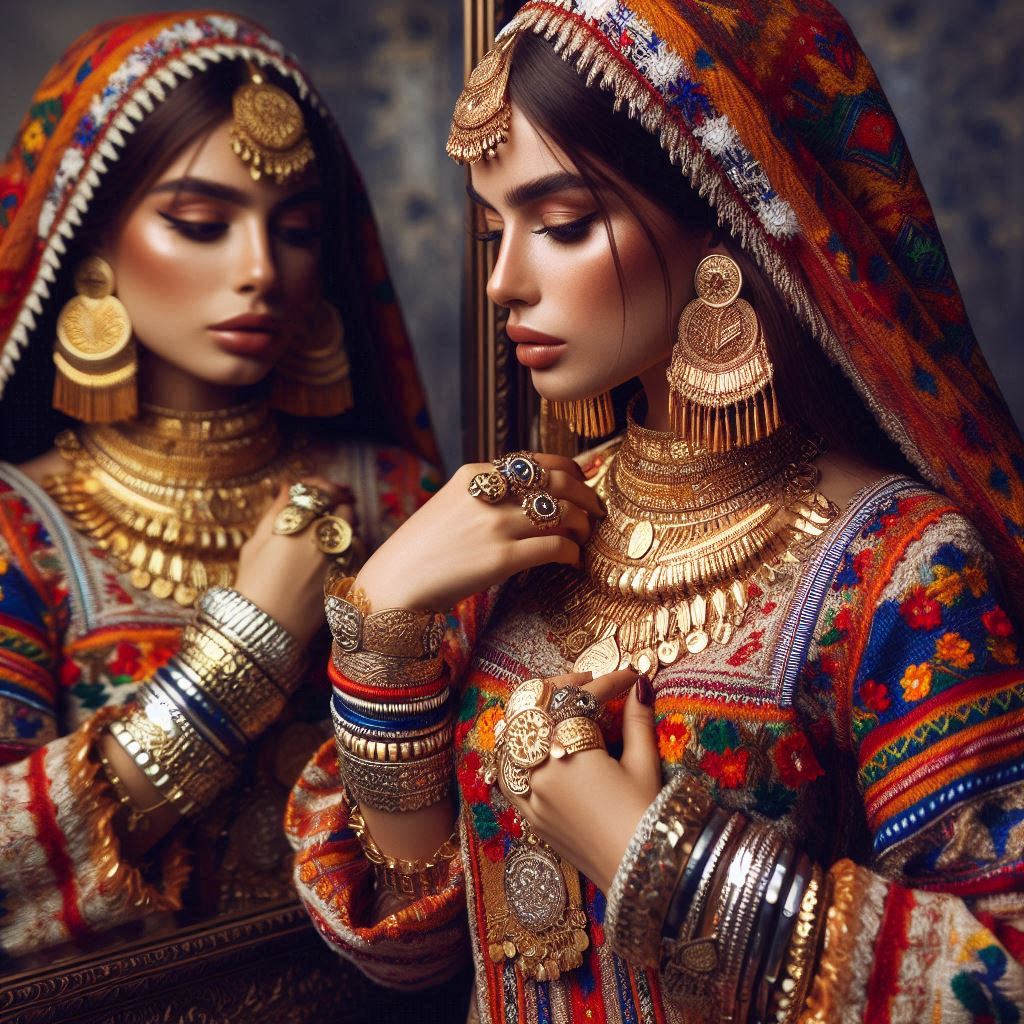
Regional Jewelry of Balochistan - Headpieces
Sarbund
- 'Sarbund' in traditional Baloch jewelry refers to a type of headpiece, often consisting of a band or chain that adorns the head. It can be richly decorated with various elements, such as coins, beads, metal embellishments, and colorful threads, reflecting the vibrant culture of the Baloch people. The design and embellishments of the Sarband vary among different Baloch tribes, showcasing regional artistry and craftsmanship. This has similarity with Arab and Persian ornaments as well.
- The 'Sarbund' in Baloch jewelry is more akin to a band or chain wrapped around the head, often incorporating coins, beads, or other traditional adornments. The 'Sarband' holds unique cultural value within Baloch traditions and has a more distinct style, reflecting the region's specific aesthetic preferences.
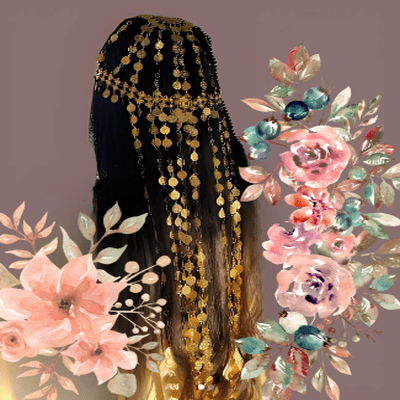 Sarbund
Sarbund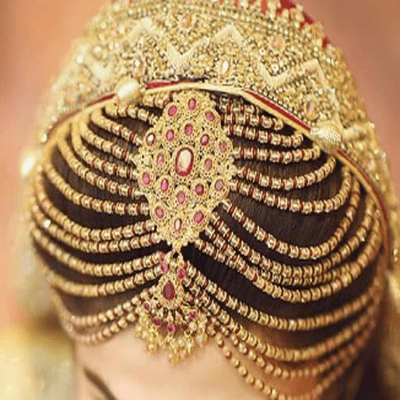 Sarbund
Sarbund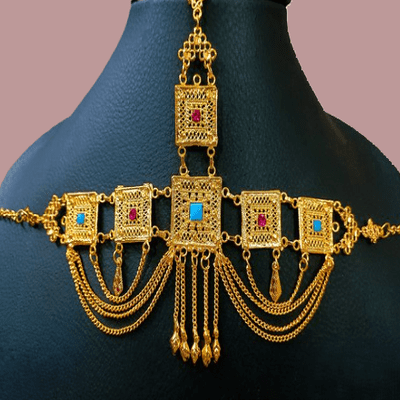 Sarbund
SarbundJhumar
- Description: The Jhumar is a traditional headpiece that hangs on the side of the head, typically worn by brides. It is usually made of silver or gold and is decorated with intricate designs, dangling chains, and colorful beads.
- Significance: The Jhumar adds a touch of grace and beauty to the bride's overall appearance.
- Baloch Jhumar: The Baloch Jhumar is a prominent, side-worn headpiece made of silver or gold, with large, solid motifs and dangling chains. The design is straightforward yet bold, emphasizing the metalwork rather than colorful embellishments.
- South Asian Headpieces: Common headpieces across South Asia, such as the tikka or matha patti, are often more ornate and centered on the forehead. They frequently include kundan (stone setting), meena (enamel), and colorful gemstones, with an emphasis on intricate designs and lighter, more delicate forms.
Teeka
- Description: Teeka is a head ornament worn in the center of the forehead, often as part of a bridal set. It is usually a pendant-like piece attached to a chain, made of gold or silver and adorned with gemstones.
- Significance: The Teeka is a symbol of femininity and grace, completing the traditional Baloch bridal look.
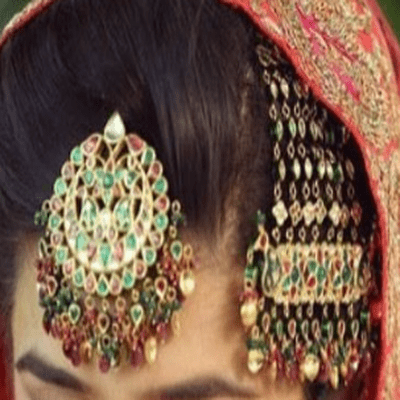 Jhoomar-Teeka
Jhoomar-Teeka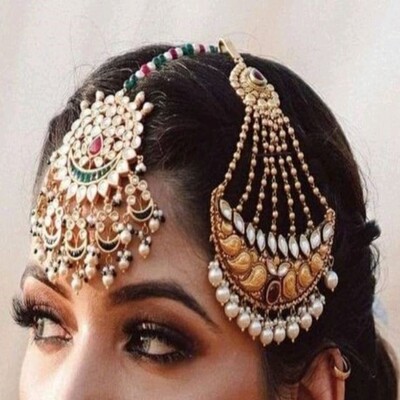 Jhoomar-Teeka
Jhoomar-Teeka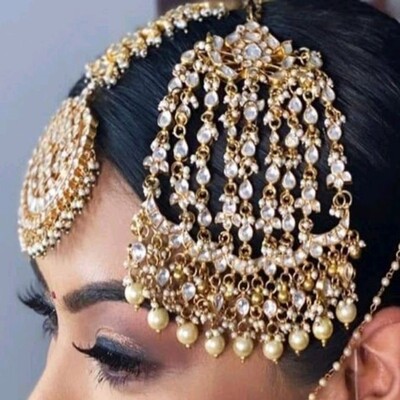 Jhoomar-Teeka
Jhoomar-TeekaRegional Jewelry of Balochistan - Nath or Nose ring
Nath
- Description: Nath is a traditional nose ring, often large and made of gold or silver. It is sometimes adorned with small gemstones or pearls and is usually worn during weddings or cultural festivals.
- Significance: The Nath is a significant part of a Baloch bride’s jewelry set and symbolizes marital status.
- Baloch Nath: Typically large and made of gold or silver, the Baloch Nath is simple and bold, focusing on the purity of the metal. It is often circular, with minimal or no additional decoration.
- South Asian Nath: In other regions, the Nath is often more elaborate, featuring pearls, gemstones, and sometimes even chains that connect to the hair. These naths are usually smaller and more detailed, with an emphasis on ornamentation and color
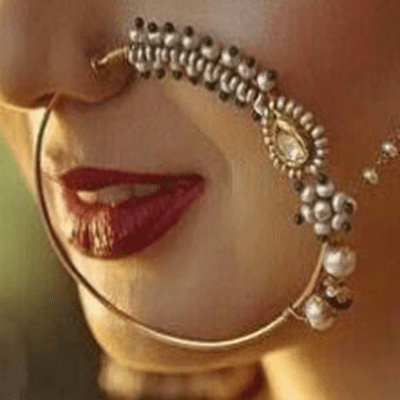 Nath
Nath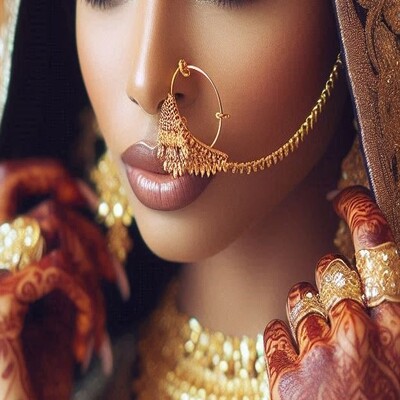 Nath
Nath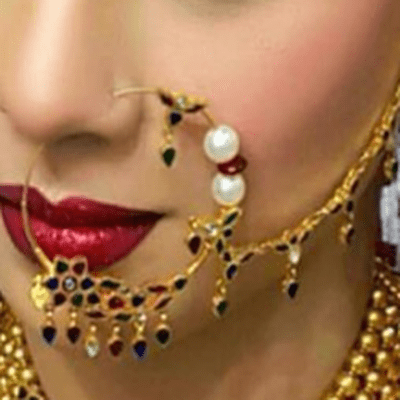 Nath
NathRegional Jewelry of Balochistan - Earrings
Boran
- In Baloch jewelry, "Boran" refers to traditional earrings worn by Baloch women. These earrings are typically large, intricately designed, and crafted from silver or other metals. The Boran earrings often feature geometric or floral motifs, with detailed engravings or decorative elements such as dangling beads or small metal charms. They are known for their bold appearance and are commonly worn during festive occasions, weddings, and cultural events.
- The design of Boran earrings reflects the artisanal skills of Balochi craftsmen and showcases the unique cultural identity of Balochistan.
Durr
- In Baloch jewelry, "Durr" refers to earrings. These earrings are often large, intricately designed, and typically made of silver. They may feature detailed engravings, dangling elements, or embellishments that reflect the traditional craftsmanship of the Baloch people. Durr earrings are commonly worn on special occasions and are a significant part of a woman's adornment in Baloch culture.
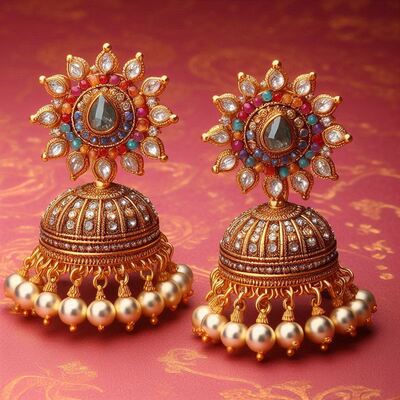 Earrings
Earrings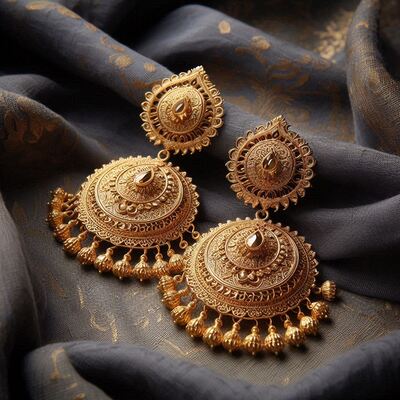 Earrings
Earrings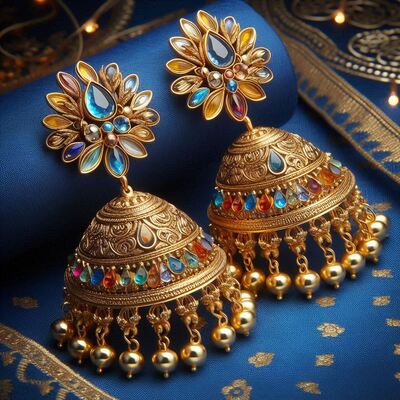 Earrings
EarringsRegional Jewelry of Balochistan - Necklaces
Har
- Description: Har is a traditional necklace made of gold, silver, or other metals. It often features a large pendant with intricate designs and is sometimes embellished with gemstones.
- Significance: Har is a common piece of jewelry worn by Baloch women, symbolizing wealth and status.
Patti
- Description: Patti is a broad choker-like necklace worn around the neck. It is usually made of metal with intricate patterns and may include colorful glass inlays.
- Significance: The Patti is a statement piece, often worn during festivals and celebrations.
- Balochi Patti: A wide, choker-like necklace that is heavy and predominantly made of silver. It features bold, linear patterns or geometric designs, and the focus is on the solidity and craftsmanship of the metal.
- South Asian Necklaces: Necklaces in other South Asian regions, such as the Sindhi Guluband, tend to be lighter and more colorful, often combining silver with glasswork, beads, and enamel. They are more ornate, with intricate designs that may include floral or nature-inspired motifs.
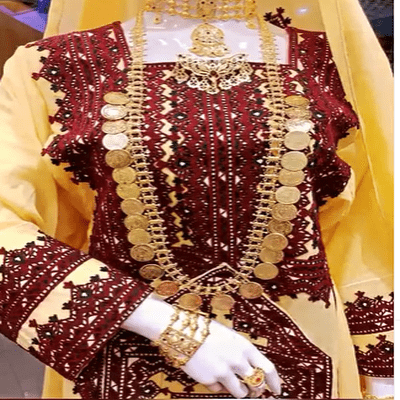 Chandan Har
Chandan Har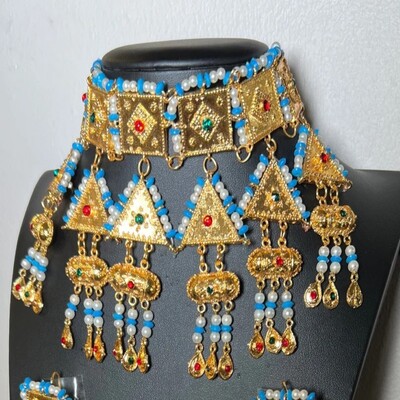 Guluband
Guluband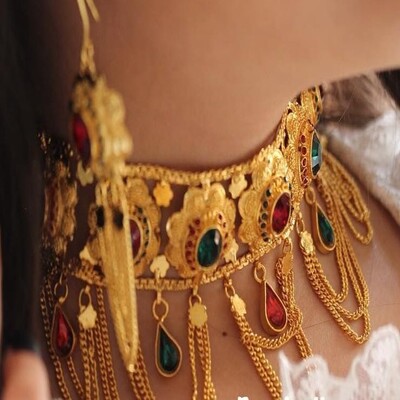 Guluband
GulubandRegional Jewelry of Balochistan - Brooches & Buttons
Tasin or Tasni
- In Baloch jewelry, "Tasin" refers to large, decorative brooches that are traditionally used to fasten clothing, particularly on dresses or shawls. These buttons are often made of silver and intricately engraved with detailed patterns, such as floral or geometric motifs, reflecting the rich craftsmanship of Baloch artisans.
- Tasin can also be adorned with small dangling elements or beads, enhancing their decorative appeal. Though primarily functional, they also serve as ornamental pieces that add to the overall aesthetic of traditional Balochi attire.
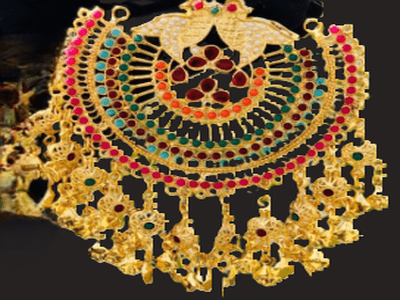 Tasin or Tasni
Tasin or Tasni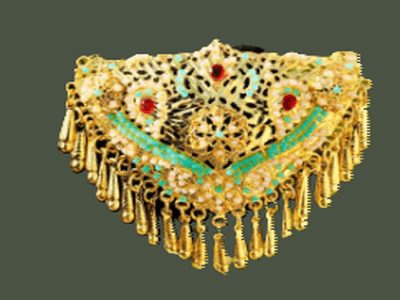 Tasin or Tasni
Tasin or Tasni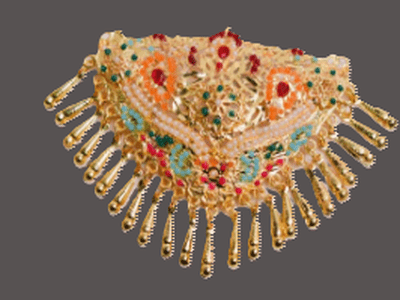 Tasin or Tasni
Tasin or TasniRegional Jewelry of Balochistan - Bangles
- These bracelets are typically crafted from silver and often feature intricate designs with geometric patterns, floral motifs, or detailed engravings that reflect the cultural heritage of the Baloch people.
- Bangles or Karay, can vary in size, from slim bangles worn in multiples to larger, more prominent bracelets. They are an important part of Baloch adornment and are often paired with other jewelry pieces like Paazeb (anklets) and Paicha (anklets), contributing to the full traditional attire. The craftsmanship of Banor highlights the artisanal skills of Baloch silversmiths.
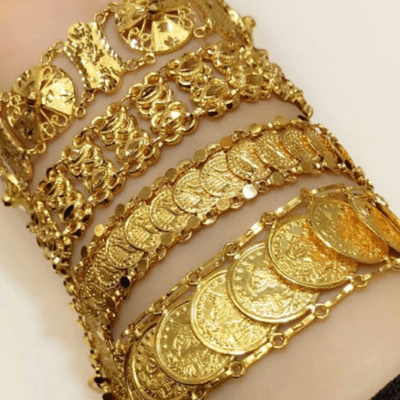 Bangles
Bangles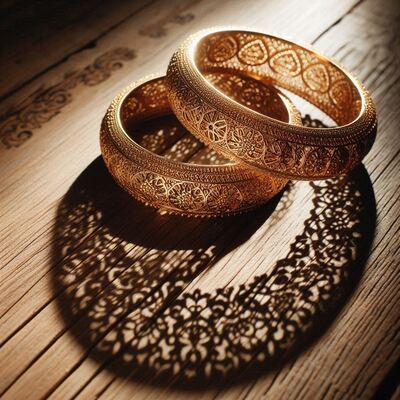 Bangles
Bangles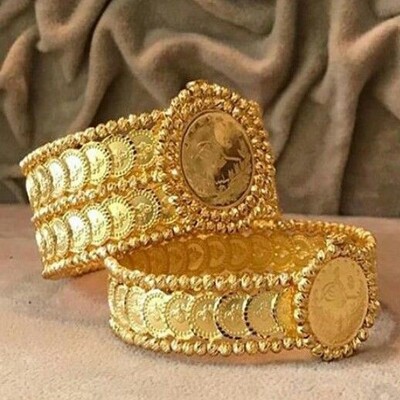 Bangles
BanglesRegional Jewelry of Balochistan - Anklets
Paazeb
- Description: Paazeb are anklets similar to Gaj but are typically more delicate and sometimes feature a chain that connects to toe rings. They are adorned with small beads, bells, or charms.
- Significance: Paazeb is worn by women during special occasions and festivals.
- South Asian Anklets: In contrast, anklets from other parts of South Asia, like those found in Punjab or Sindh, tend to be more delicate and lighter. They often incorporate intricate filigree work, colorful beads, and sometimes gemstones, with a focus on fine detailing rather than bold statements.
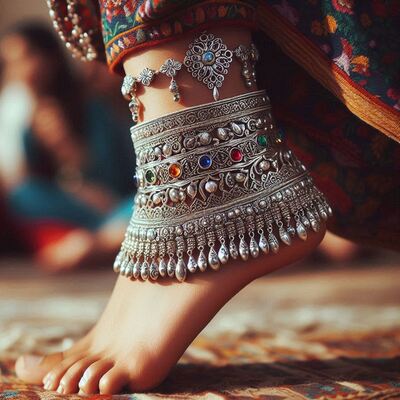 Paazeb
Paazeb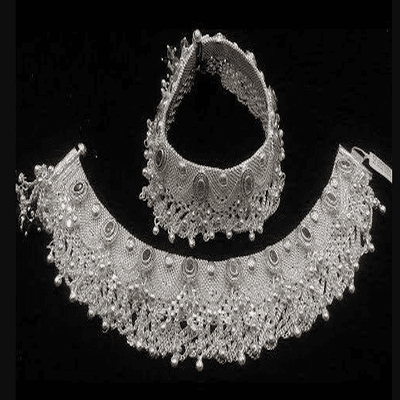 Paazeb
Paazeb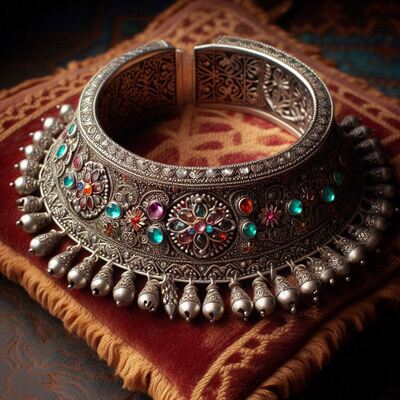 Paazeb
PaazebRegional Jewelry of Balochistan - Distinguishing Features & Similarities
- Baloch Jewelry is characterized by bold, heavy designs, primarily in silver or gold. The focus is on solid metalwork with minimal use of color or embellishments. The motifs are geometric or nature-inspired, reflecting the strong cultural heritage of the Baloch people.
- Similarities with other regional jewelry are with Sindhi and Multani styles, though unique in itself.
- Baloch jewelry shares notable similarities with Arab, Iranian and Afghan designs, reflecting the region's historical and cultural ties. These connections are evident in several aspects:
Metalwork Tradition (Silver Focus)
- Baloch, Arab, and Iranian jewelry heavily use silver as the primary metal. This is a hallmark of traditional jewelry in these regions, with silverwork often featuring intricate filigree, engravings, and hammered designs. The handcrafted nature of these pieces, particularly the use of tools like hammers and chisels, connects the craftsmanship across these cultures.
Geometric and Floral Patterns
- All three cultures feature geometric shapes and floral motifs in their jewelry. In Baloch jewelry, we often see bold geometric shapes and symmetrical designs similar to what is seen in Iranian jewelry, which also uses repeated patterns such as rosettes and floral engravings.
Adornments with Beads, Coins, and Chains
- Baloch jewelry frequently uses coins, beads, and dangling elements, which are also common in Arab and Iranian jewelry. These embellishments often add texture and movement, symbolizing wealth and status in these cultures.
- For instance, the Baloch Jhumar and sarbund (headpieces) resembles Arab tribal jewelry that incorporates coins and chains into head adornments. Similarly, Iranian necklaces and belts (like Kamarbands) feature rows of coins or small decorative metal pieces.
Amulets and Symbolism
- The use of amulets or protective talismans, like the Tawiz in Baloch culture, has parallels in Arab and Iranian jewelry traditions, where such pieces are worn for protection and spiritual significance. Iranian necklaces often feature engraved symbols or prayers, while Arab jewelry includes talismans with protective charms.
Size and Boldness
- Baloch jewelry, like Arab and Iranian styles, is often large and bold. Earrings, necklaces, and bracelets are considerably larger, with heavy metalwork, making them statement pieces. These designs stand out for their boldness and cultural pride, with earrings like Durr in Baloch jewelry comparable to large Arab earrings and Iranian chandelier-style earrings.
Overall, Baloch jewelry’s bold shapes, silver craftsmanship, geometric patterns, and decorative elements closely align with both Arab and Iranian designs, showing a shared cultural heritage across these regions. However, Balochi jewelry also retains its distinct identity, particularly through the use of tribal symbolism and regional craftsmanship.
- Home
- Products and Trades ›
- Pakistani Jewelry >
- Regional Jewelry of Balochistan


